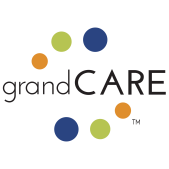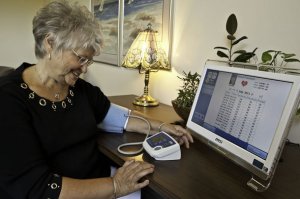If you were around during the 80’s and 90’s, I’m sure you remember that clever catchphrase, “I’ve fallen and I can’t get up”, and the television commercials from a certain maker of a medical emergency response systems. Fast forward to 2015, and a lot has changed in the way of digital health technology. The advent of smartphones, tablets, watches, fitness wristbands, and other devices are changing our world and just how mobile we can be without losing our connection to everything digital.
Let’s face it, we live in a fast paced world and people crave their technology gadgets, addicted sometimes, and when said gadget goes down for any reason, say, your kid drops it in the toilet, or you leave it in the bathroom at the airport in your rush to make your connecting flight…your digital life is temporarily ‘over’.
But, if you are someone over the age of 65, life tends to slow down a bit. Trading in chasing around kids to soccer practice, and making the early morning client meeting for a more relaxed lifestyle tending to a flower garden at home, enjoying time volunteering for local community causes, or even just unwinding in a favorite recliner while reading a good book. However, this newfound freedom and independence often comes with its own share of dangers of the unknown.
According to a recent article by Today’s Caregiver:
Studies report that 30% of people who are over the age of 65 (about 35 million Americans) fall every year, and that these incidences increase to 50% for those over the age of 80.
It’s been estimated that at least 60% of all falls occur in the home… people with neuromuscular or cognitive diseases such as Parkinson’s, Alzheimer’s, epilepsy, multiple sclerosis, muscular dystrophy, ALS and even diabetes fall even more frequently.
Whatever the reasoning, the danger still exists for someone who has taken a fall, especially if they are elderly and alone. For those who are unable to get up from a fall, the amount of time they spend immobile will greatly affect the outcome of their health and rehabilitation. In other words, a fall that results in a serious injury may signify the beginning of declining health that may become an irreversible, downward spiral.
So, how can you ensure your loved one won’t become a tragic victim of this downward spiral from a fall that goes undected? You could opt for a personal emergency response system (PERS), such as the one from the tv advertisements, but those require your loved one to actually push a button. What if your loved one suffers a medical episode which hinders their ability to push this button? This is a gap of the traditional PERS solution, a gap that our technology can help fill.
Introducing the grandCARE system solution which incorporates a series of passive activity and motion sensing devices to better monitor patterns of behavior instead of requiring the user to push a button. If there is no motion, excessive motion, or activity patterns that do not fit the norm, an alert will go out regardless of the individual person’s ability to engage the push button. Download: Gaps of PERS System Flyer
Learn more about how passive activity and motion sensing devices can provide you added peace of mind by visiting our website www.grandCARE.com.
About grandCARE:
GrandCare Systems LLC, founded in 2005, offers the most comprehensive and holistic professional care giving and health coordination tool on the market. grandCARE is a large touch platform which provides health instructions, secure video chat, wireless vital recordings and analytics, medication compliance, activity sensing, and family communications into one intuitive and expandable platform. grandCARE focuses on true individual centered care, enabling better experience, better engagement, and better outcomes. For more information, visit: www.grandcare.com or call 262-338-6147.
Media Contact:
Amy Schwengels 262.338.6147 media@grandCARE.com
Note: “I’ve fallen and I can’t get up” is a registered trademark of LifeAlert.







